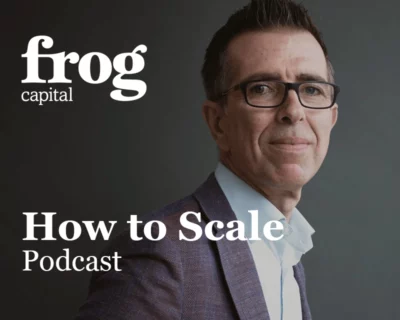Recently, I was asked to be a speaker at a CEO dinner event hosted by Bailey Fisher covering this very topic. There were upwards of 15 CEOs at the meeting and it was a really great and lively discussion so I thought a blog would be in order. The topic of boards is an extremely important one for any company, and having been Founder/CEO, Angel investor, Exec Chair, Non-Exec chair, and now VC has given me a really interesting perspective from multiple angles.
As per my last blog on scaling your business, I was candid to say that for the first 5 years of my startup, I really didn’t know what I was doing. That also included running my board.
As with many first-time CEO/founders from a technical background, I had no clue how to run a commercial company and what it meant to take institutional investment. Intuitively, I knew I had to have a strong board but had no idea how to run one or how to get the best out of my board members. After five painful years of doing it badly, I began to realise how to do it better and frankly I am still learning how to do it really well.
Before we dive in, it may be worth just explaining why you should even have a board and, when you do, what they normally comprise of. The board’s job is three things in my experience: governance, strategy (or the big picture), and hire (or fire) the CEO. In VC-backed companies, and mine was one, depending on the number of rounds raised, you can have anywhere between 1-3 investor directors. Founders normally get 1-2 seats depending on their level of shareholding and/or executive responsibility, and 1-2 non-execs (one of whom can be a chairperson). Personally, I would not recommend going above seven directors on a board.
From CEO’s perspective, managing VCs can be tough especially if you are inexperienced at doing it. For CEOs the easiest VCs to work with are those who have had senior operational roles in their past and therefore understand the business challenges. They can also be extremely valuable as they can bring a level of insight that other VCs without operational background simply cannot. Of course most VCs do not have operational background however the really good ones that I had the pleasure of working with – and I have been lucky enough to have had a few on my board – are considerate and do their best to cause least disruption, providing as much support as possible. You might not be able to determine what kind of a VC director you will get on your board in advance but if you have the luxury of multiple term sheets when raising, do your due diligence and request references on the individual joining your board.
Non-executive directors are truly the responsibility of the CEO with input from the board to appoint. My personal recommendation is to hire a great chairperson, especially if you are a first-time CEO/founder. The ideal skillset of a chair is someone with market knowledge and several more years’ experience running a business who can manage multiple stakeholders with varied interests and, critically, get on well with the CEO. Of course, that’s a rare combination of skills so, if you have to prioritise, I would go for someone who you have great chemistry with, capable of managing the board and stakeholders with experience of scaling a company so they can be a real mentor. For a non-exec director, I would rank sector knowledge much higher than other qualities, whereas this is much less important for a chairperson. A chairperson needs to be there for the long haul as they will get to know all the execs, other board members and will have more responsibility for the company – a chairperson is normally in place for at least four years.
As a CEO, here is what you need to do to get the most out of your board:
Get everyone aligned
Your first task is to get everyone aligned on a well-defined direction of travel for the next 3-4 years and an aspirational direction of travel for the future beyond 4 years’ time. Your strategy and plan should be the result of discussions that took place with your executive team, who should be 100% signed up to it. Be clear about what the end game is: how you are going to make money for your shareholders who gave you their hard-earned cash or their investors’ hard-earned cash to deploy into your venture. The better aligned the board, the easier they are to manage and the more effective you can be at running the company. You need to do this every time you raise a new round or get a new board member. Annual check-ins on strategy and plan is always a good idea to remind everyone about it.
Be honest and open about your challenges
CEOs or exec teams who are trying to hide stuff in the hope it will be alright will inevitably be found out in the end. Boards do not like surprises, so be proactive in bringing up potential risks or, if you’ve made a mistake, put your hand up. As CEO, it is your responsibility even if it’s one of your team who’s made a mistake. After all you appointed him or her! Naturally, you cannot turn up to board meetings with a list of issues and not have a plan. It’s important you and your team diligently go through every business issue, assess the risk and mobilise the organisation to fix it, keeping your board informed of the most critical ones.
Under-promise and over-deliver
This may sound clichéd, but it is so true – you have to be bold and ambitious but with one foot firmly on planet Earth. Do not base your forecasts on hope; do the hard work. Meet with your team to go through every customer, every opportunity, every product plan, every roadmap item; build a plan that is based on realism and ambition, not just ambition. In a previous blog, I discussed quarterly KPIs, which are a really good way of keeping your feet firmly on the ground, as you no longer are promising annual numbers, you are committing to the board to achieve quarterly numbers too. Yes, this raises the pressure but take it from someone who didn’t do this and paid for it in dilution. Thankfully it all worked out fine for me in the end and I got my big house, fast car and financial security but it could have so easily gone the other way.
Move your board meetings from “reporting” to “discussing”
I have to admit I am still working on this one myself. Clearly the investors who have put in their money want to have a detailed operational report which needs to be done, but then that takes up so much time that there isn’t sufficient time to discuss critical business issues: market dynamic, competition, strategy and so on. One thing I am trying right now is to hold long board meetings once a quarter, and shorter board call updates in between. The short board calls will be pure reporting, but the longer quarterly ones should be minimal reporting and mainly focused on discussing what’s really critical to the CEO and the exec team. I will be trying this new format shortly with a great company in my role there as chairwoman and I will be sure to report back how it’s going in a future blog.
In summary, as CEO, keep three things in mind when managing your board: alignment, honesty, and finally deliver against your quarterly and annual targets. Do these three things and you will have a great relationship with your board.













